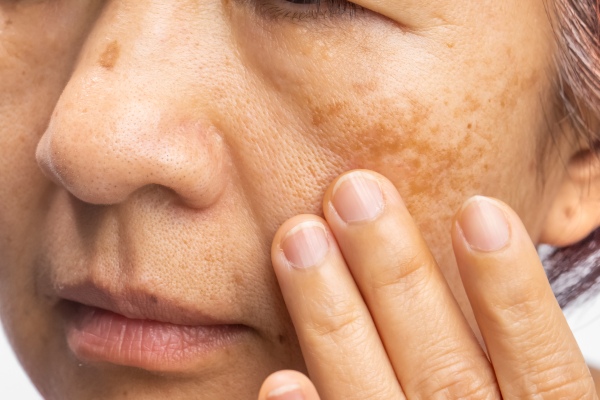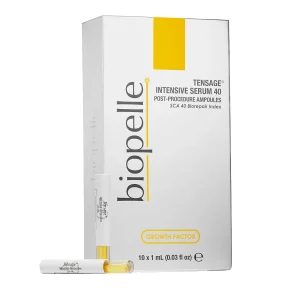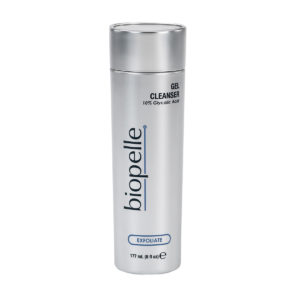As you age, you may begin to notice patches of skin discoloration on your face. These may be more noticeable in areas that have been most exposed to the sun. During perimenopause and menopause, estrogen levels can fluctuate between high and low.
Spikes in estrogen along with years of accumulated UV exposure can accentuate the look of uneven dark patches and photodamaged skin. During menopause, skin also becomes thinner as it loses collagen. When collagen production slows, the thinning skin barrier can be more susceptible to hyperpigmentation.
Learn more about what can cause skin discoloration in premenopausal and menopausal women and what skincare ingredients to look for.
How Menopause and UV Exposure Impacts Skin Discoloration
“During menopause, some women experience more pigmentation on their face,” says Dr. Lynn M. Klein, MD, a dermatologist at Lankenau Medical Center. “This is caused by a combination of hormonal changes and sun exposure.”
Overexposure to the sun without protection, including sunburn, can lead to hyperpigmentation, sun spots and skin discoloration. Hyperpigmentation refers to the darkening of skin beyond its natural color due to an overabundance of melanin in areas of the face. Exposure to the sun’s ultraviolet rays over time can trigger melanin production in an effort to protect your skin against UV damage.
Skincare Ingredients for Skin Discoloration
To help prevent and repair hyperpigmentation, look for skincare ingredients that naturally brighten skin and support cellular turnover to reveal more youthful-looking skin. Helpful ingredients for skin discoloration include:
- Kojic acid: Kojic acid is a potent antioxidant that reduces hyperpigmentation by blocking the production of tyrosine. Tyrosine is an amino acid that’s needed to produce melanin, so kojic acid can prevent melanin production.
- L-Ascorbic acid: L-Ascorbic acid is a form of vitamin C that inhibits melanin synthesis. It’s often recommended for depigmentation of sun spots on the skin.
- Niacinamide: Niacinamide can help mitigate the look of hyperpigmentation and other skin concerns by encouraging the skin to build proteins and lock in moisture.
- Phytic acid: Phytic acid exfoliates skin and has antioxidant properties to protect and repair skin. It’s been clinically proven to improve skin hyperpigmentation and overall luminosity.
- Retinol: Retinol is a form of vitamin A that has anti-inflammatory properties that can help stimulate cellular turnover and improve the appearance of hyperpigmentation.
- Vitamin K oxide: Skin application of vitamin K can help suppress pigmentation.
Skincare ingredients like these help prevent hyperpigmentation, can help remove surface-level hyperpigmentation through exfoliation and promote cellular turnover to reveal brighter skin.

Tensage Intensive Serum 40
$149.60Exfoliate Gel Cleanser
$29.70

Tensage Intensive Serum 40
Exfoliate Gel Cleanser
Clinically Proven Help for Skin Discoloration
Biopelle’s hyperpigmentation products feature ingredients that can help improve the look of discoloration. You can use these products to help protect skin, prevent hyperpigmentation and repair the look of photodamaged skin.
To reveal brighter skin and a more youthful-looking appearance, look to Biopelle’s Brightening Set. The set has two hyperpigmentation corrective skincare products:
- Tensage Intensive Serum 40: Tensage Intensive Serum 40 with vitamin C improves skin tone and luminosity and reduces signs of photodamage.
- Exfoliating Gel Cleanser: Exfoliating Gel Cleanser gently exfoliates skin to promote cellular turnover and brighten skin.
To help prevent discoloration, the Hyperpigmentation Defense Set also includes the XCP Brightening Serum, plus the KNR Serum with kojic acid, niacinamide, vitamin C and retinol, and the Exfoliating Cream Cleanser.
Whatever your unique skincare needs are, Biopelle’s hyperpigmentation skincare products can help you address them. Shop now.


